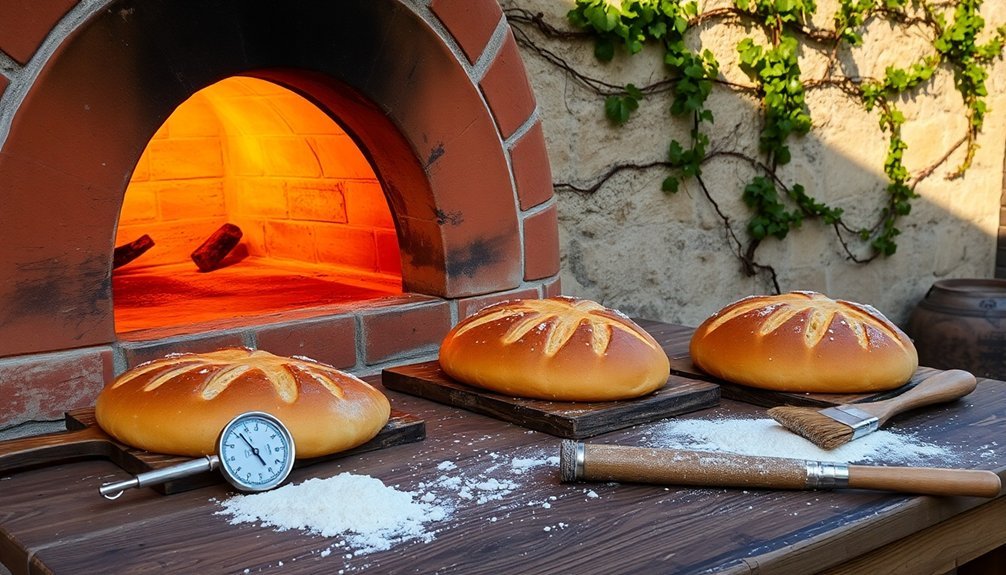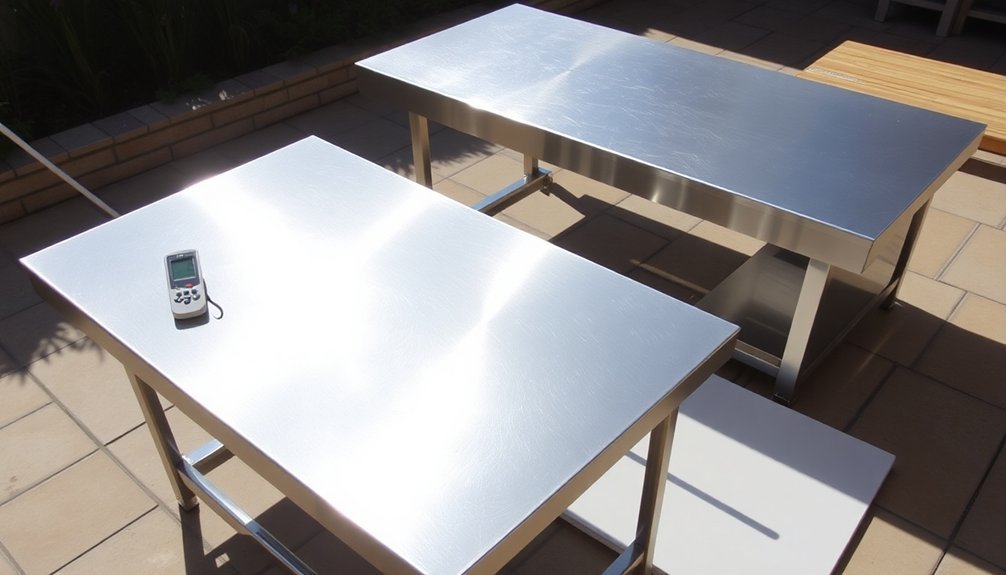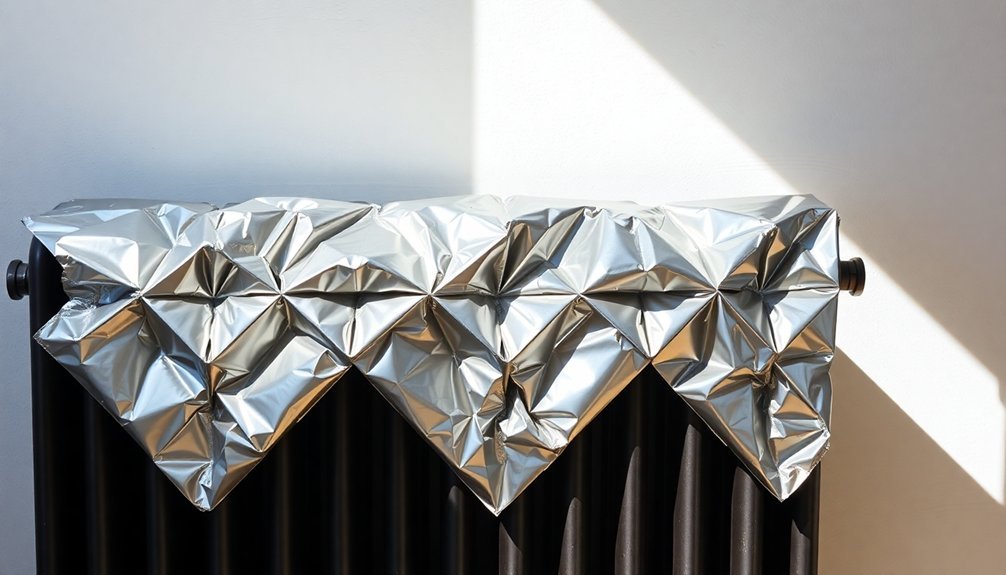When baking bread in an outdoor solar oven, you'll need to make three key adjustments to your recipes. First, position your oven directly toward the sun and adjust it every 30-45 minutes to maintain temperatures between 150-225°F. Second, prepare your dough with cold water and knead it longer (8-10 minutes) to develop strong gluten structure, making it slightly tackier than usual to combat outdoor drying effects. Third, time your baking between 11:00 am and 3:00 pm for ideal solar energy, and preheat your oven for 15-20 minutes in a sunny spot. These fundamental adaptations will open up a world of successful outdoor bread baking possibilities.
Temperature Control For Solar Heat

While mastering bread baking in a solar oven requires attention to detail, controlling temperature begins with proper positioning and insulation.
You'll need to face your oven directly toward the sun and adjust it every 30-45 minutes to maintain consistent heat. Use a ruler to keep the reflective flap at the ideal angle, ensuring the oven's face stays perpendicular to the sun's rays.
To achieve the ideal bread-baking temperature of 150-225°F, you'll want to layer your insulation materials carefully. Unlike traditional pizza ovens that reach temperatures over 500°C, solar ovens require different techniques for optimal results.
Wrap the cooking cavity with crumpled newspaper or spun fiberglass, and line it with aluminum foil to enhance heat retention. Monitor your oven's temperature with a reliable thermometer and preheat it before adding your dough.
For best results, choose a clear, sunny day and bake between 10 AM and 4 PM.
Dough Preparation Adjustments
Because outdoor ovens heat differently than conventional ones, you'll need to adjust your dough preparation techniques accordingly.
Start with cold water to prevent premature fermentation, and focus on developing strong gluten structure through proper kneading. You'll want your dough slightly tackier than usual, as outdoor ovens can dry out the crust more quickly. Cooking at 700-800°F temperatures requires careful attention to dough consistency.
- Mix ingredients briefly in a food processor, then finish kneading by hand for 8-10 minutes to maintain ideal dough temperature
- Let the dough cold-ferment for 1-2 days to develop deeper flavors that'll stand up to intense outdoor heat
- Shape your dough balls to 175-260 grams each, ensuring tight, round forms
- Use extra cornmeal or semolina when shaping to prevent sticking and create a crispier bottom crust
Solar Baking Time Management

Successful solar bread baking depends heavily on strategic time management and sun positioning.
You'll want to start your baking between 11:00 am and 3:00 pm when solar energy is strongest. Begin by preheating your oven for 15-20 minutes while positioning it in a sunny, south-facing spot. Box-type solar ovens are particularly effective for bread baking since they maintain consistent temperatures.
To maintain ideal temperature, you'll need to adjust your oven every 30-45 minutes, ensuring the sun strikes the glass at a 90-degree angle. Check that the oven's shadow remains symmetrical behind it for perfect alignment.
During winter months, tilt your oven more dramatically to compensate for the sun's lower position. Keep the door slightly open during the rising phase, and monitor your bread's progress by tapping it for that hollow sound.
Using dark, thin metal baking dishes will help reduce overall cooking time.
Frequently Asked Questions
Can I Use Gas-Fired Outdoor Ovens During Rainy Weather?
You can use a gas-fired outdoor oven in rain if it's properly covered and ventilated. Just make sure your gas components are waterproof, and you've got adequate shelter to protect both you and the oven.
How Do Different Wood Types Affect Bread Flavor in Wood-Fired Ovens?
You'll notice hardwoods like oak give your bread a clean, robust smoky flavor, while softwoods can leave an unpleasant resinous taste. Each hardwood type creates unique flavors through its distinct burning characteristics.
What's the Best Way to Clean Outdoor Ovens Between Bread Batches?
Between bread batches, you'll need to sweep out ashes and debris with a stiff brush. Don't use water or chemicals. Instead, scrape off any stuck residue and let your outdoor oven cool completely.
Should Outdoor Oven Doors Remain Closed During the Entire Baking Process?
You'll need to open your outdoor oven door briefly to check progress, but keep openings minimal and quick. It's crucial to maintain consistent temperature, so don't leave the door open longer than necessary.
How Can I Prevent Ash From Settling on Bread in Wood-Fired Ovens?
You can prevent ash by sweeping the oven floor thoroughly, using parchment paper under your bread, maintaining proper steam levels, and ensuring your oven door seals well to minimize ash circulation during baking.
In Summary
You've learned key adaptations for baking bread in solar ovens: managing fluctuating temperatures, modifying dough consistency, and adjusting baking times. With these techniques, you'll create delicious loaves using sustainable outdoor methods. Don't forget to check your bread's internal temperature and crust development as you perfect your solar baking skills. You're now ready to harness the sun's power for your bread-making adventures.





Leave a Reply